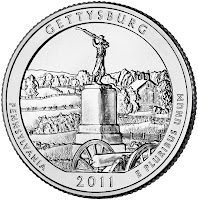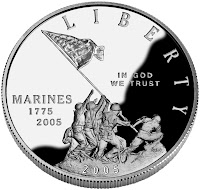The first recorded organized public recognition of the war dead occurred on May 1, 1865 in Charleston, South Carolina. On that day, Freedmen (freed southern slaves) celebrated the service of the 257 Union soldiers buried at the Washington Race Course (now Hampton Park). They labeled the gravesite “Martyrs of the Race Course.” African Americans continued that tradition and named the celebration Decoration Day.
 The next year, southern states began their own Memorial Days to honor their soldiers who died during the war. No specific date was used but occurred in late April through June. By 1880, there was a more organized Confederate Memorial Day. These celebrations honored specific soldiers to commemorate the Confederate “Lost Cause.” By 1913, a sense of nationalism saw a commemoration of all soldiers that have died in battle.
The next year, southern states began their own Memorial Days to honor their soldiers who died during the war. No specific date was used but occurred in late April through June. By 1880, there was a more organized Confederate Memorial Day. These celebrations honored specific soldiers to commemorate the Confederate “Lost Cause.” By 1913, a sense of nationalism saw a commemoration of all soldiers that have died in battle.
In the north, the fraternal organization of Civil War veterans The Grand Army of the Republic began organizing “Decoration Day” in 1868. Decoration Day was to honor the fallen by decorating the graves of Union soldiers with flowers and flags. Ceremonies included speeches that were a mix of religion, nationalism, and a rehash of history in vitriolic terms against the Southern soldiers. The acrimony against the South began to subside by the end of the 1870s
Although Ironton, Ohio and Columbus, Mississippi claims to have the oldest and longest running celebrations, the most famous was started at Gettysburg National Park in 1868.
 Gettysburg is the location of the three day battle where Union Major General George Gordon Meade’s Army of the Potomac defeated attacks by Confederate Gen. Robert E. Lee’s Army of Northern Virginia. It was the bloodiest battle of the Civil War and had the largest number of casualties. During a 50th Anniversary memoriam of the deceased, veteran of the Union and Confederate armies gathered for a four-day “Blue-Gray Reunion.” The event included speeches by President Woodrow Wilson, the first southern elected president since the Civil War, and Congressman James T. Heflin of Alabama. Heflin’s speech was memorable in his endorsement of building the Lincoln Memorial and a call for a Mother’s Day holiday.
Gettysburg is the location of the three day battle where Union Major General George Gordon Meade’s Army of the Potomac defeated attacks by Confederate Gen. Robert E. Lee’s Army of Northern Virginia. It was the bloodiest battle of the Civil War and had the largest number of casualties. During a 50th Anniversary memoriam of the deceased, veteran of the Union and Confederate armies gathered for a four-day “Blue-Gray Reunion.” The event included speeches by President Woodrow Wilson, the first southern elected president since the Civil War, and Congressman James T. Heflin of Alabama. Heflin’s speech was memorable in his endorsement of building the Lincoln Memorial and a call for a Mother’s Day holiday.
 Memorial Day did not take on national significances until after World War I. Rather than being a holiday to remember those of died in service during the Civil War, the nation began to recognize all those who gave the ultimate sacrifice during all conflicts. By the end of World War II, most of the celebrations were renamed from Decoration Day to Memorial Day. Memorial Day did not become an official holiday until 1967 and its date changed from the traditional May 30 to the last Monday of the month by the Uniform Holidays Act (Public Law 90-363, 5 U.S.C. § 6103(a)) in 1968.
Memorial Day did not take on national significances until after World War I. Rather than being a holiday to remember those of died in service during the Civil War, the nation began to recognize all those who gave the ultimate sacrifice during all conflicts. By the end of World War II, most of the celebrations were renamed from Decoration Day to Memorial Day. Memorial Day did not become an official holiday until 1967 and its date changed from the traditional May 30 to the last Monday of the month by the Uniform Holidays Act (Public Law 90-363, 5 U.S.C. § 6103(a)) in 1968.
The modern Memorial Day is a holiday celebrating the lives of those sacrificed in defense of the United States and its ideals at home and abroad. Today, we honor the memories of those who paid the ultimate sacrifice so that I can write this blog and you can read it.
Coin images courtesy of the U.S. Mint.
Vietnam Memorial image from Wikimedia.



2 Comments